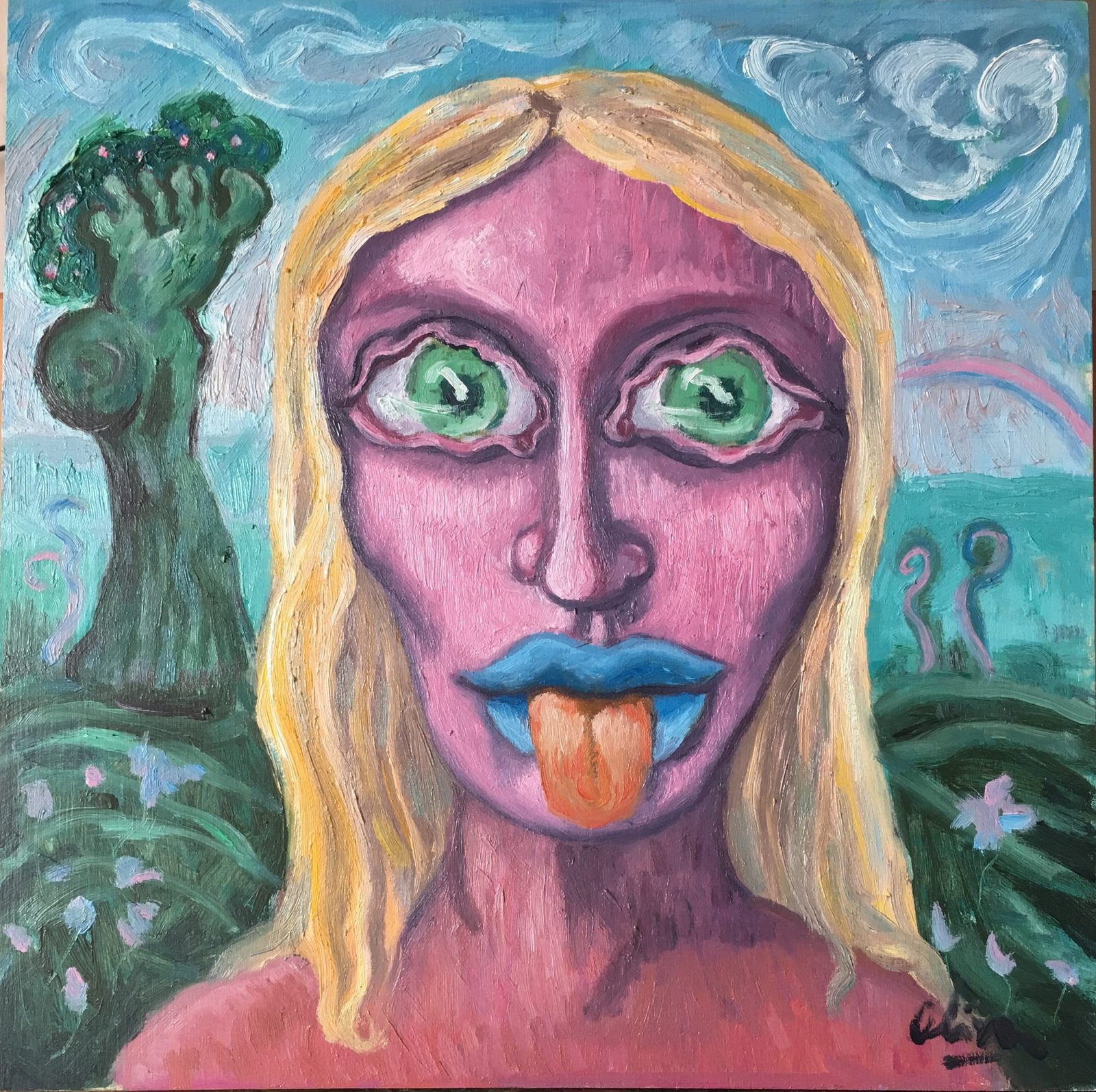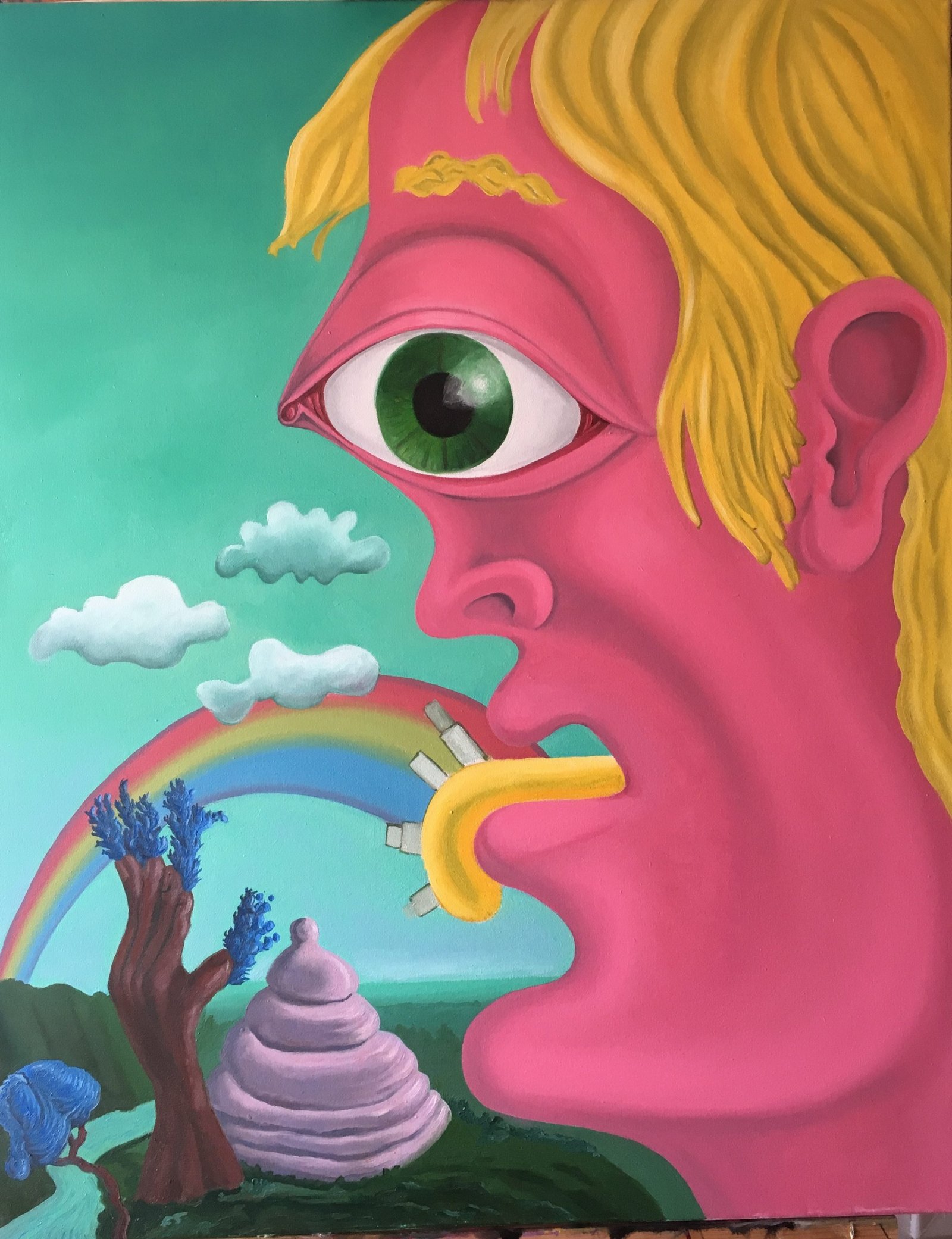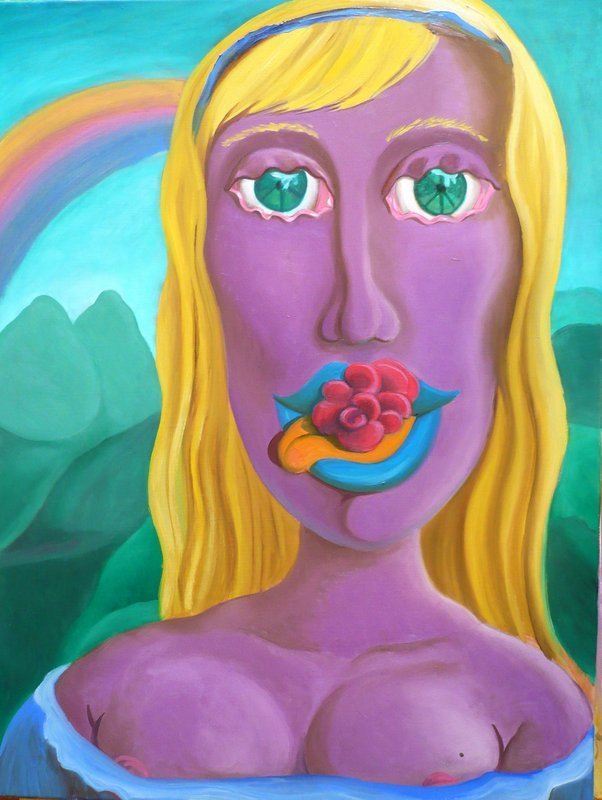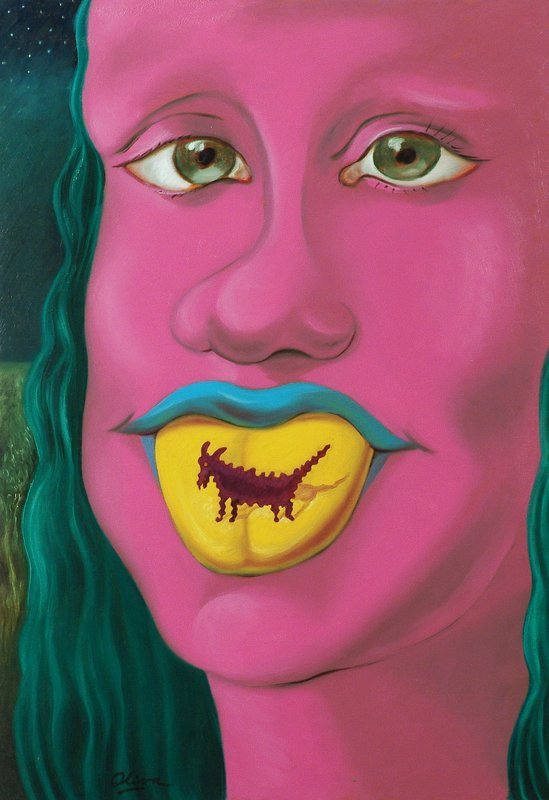
Oil on cardboard
While Psychedelic Surrealism doesn't have a single unified theory, it draws from the foundational principles of Surrealism and the psychedelic experience to create a unique and mind-expanding aesthetic. Here are some key aspects that contribute to the theoretical framework of Psychedelic Surrealism:
Surrealist Roots: Unconscious Mind Exploration: Like traditional Surrealism, Psychedelic Surrealism seeks to explore the depths of the unconscious mind. Artists are inspired by the dream world, tapping into the surreal and bizarre imagery that emerges from the subconscious.
Automatism: Surrealist automatism, a technique that involves spontaneous, unpremeditated creation, is often embraced in Psychedelic Surrealism. Artists may let their subconscious guide the creation process, allowing for unexpected and unplanned imagery to surface.

Psychedelic Experience:Expansion of Consciousness: Psychedelic Surrealism is heavily influenced by the experiences induced by psychedelic substances like LSD. Artists attempt to visually capture the expansion of consciousness, altered perceptions of time and space, and the dissolution of boundaries between the self and the external world.
Hallucinatory Imagery: The vivid and intense colors, intricate patterns, and distorted perspectives in Psychedelic Surrealism aim to mimic the hallucinatory effects of psychedelic experiences. Artists often depict visuals that mirror the vibrant and dynamic nature of altered states of consciousness.
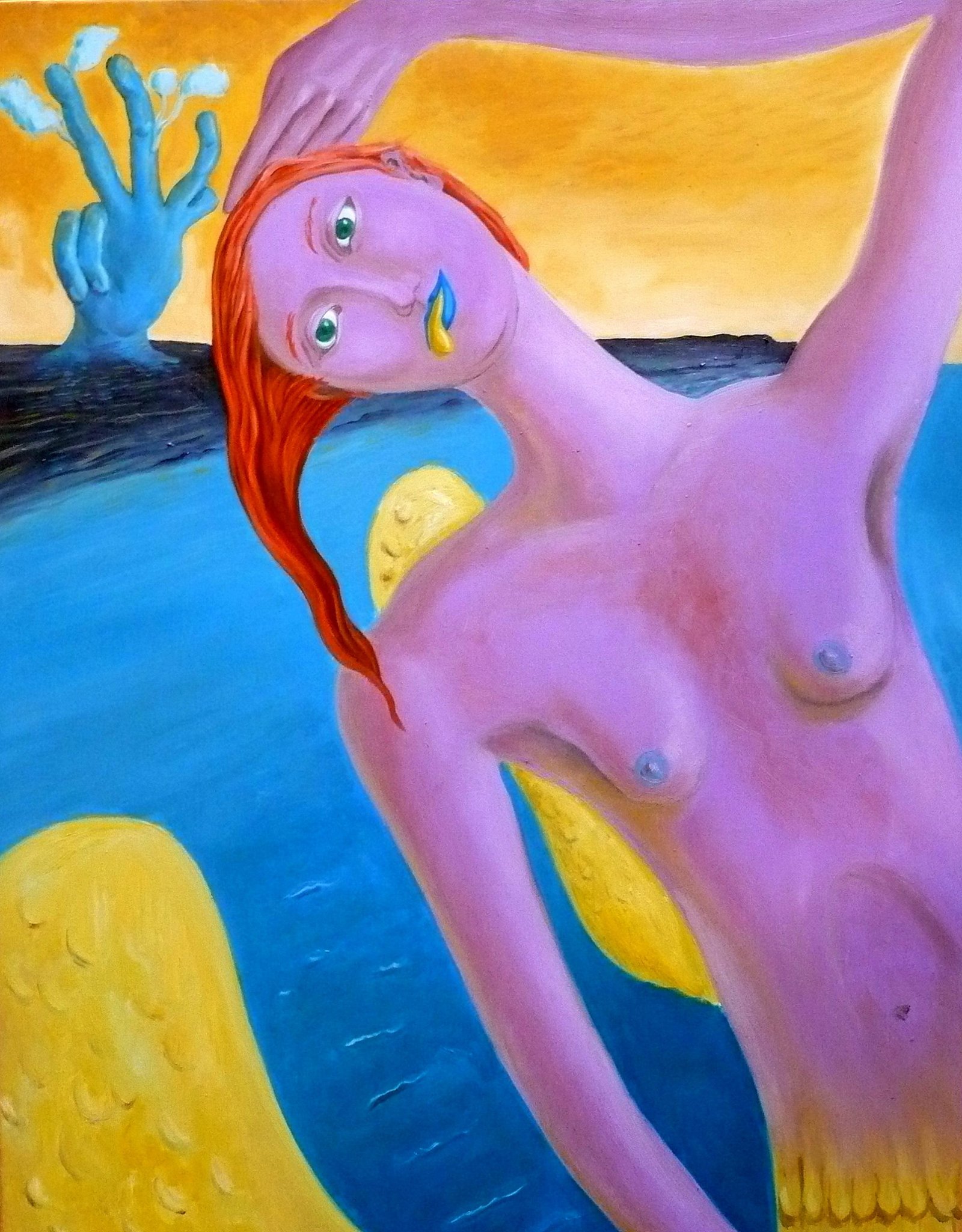
Spiritual and Transcendental Themes: Many works within Psychedelic Surrealism touch on spiritual and transcendental themes. Artists may explore the mystical dimensions of the mind, aiming to convey a sense of interconnectedness with the cosmos and a higher, spiritual reality.
Countercultural Ideals: Rejection of Norms: Psychedelic Surrealism is often associated with countercultural movements that emerged in the 1960s. The rejection of societal norms, pursuit of alternative lifestyles, and a desire for personal and collective liberation are reflected in the themes and motifs of this art.
Activism and Social Critique: Some Psychedelic Surrealist works engage in social critique and activism, challenging established power structures and advocating for peace, love, and unity. The art becomes a vehicle for expressing a utopian vision of a more harmonious and interconnected world.
“Psychedelic Surrealism” refers to a blend of two artistic movements: Surrealism and Psychedelic art. Let’s break down each component:
Holistic Vision: Nature and Cosmos: Psychedelic Surrealism often features organic and cosmic motifs. Artists may depict swirling galaxies, morphing plant forms, and cosmic landscapes, emphasizing a holistic vision that connects humanity with the natural world and the broader universe.
Unity of Opposites: There’s often a fascination with the interplay of opposites – life and death, order and chaos, microcosm and macrocosm. Psychedelic Surrealism seeks to reconcile these dualities, emphasizing the interconnectedness of all things.
In summary, the theory of Psychedelic Surrealism revolves around the exploration of the unconscious mind, the incorporation of hallucinatory elements inspired by psychedelic experiences, and a countercultural ethos that challenges societal norms. The art strives to create visually captivating representations of expanded consciousness and a harmonious, interconnected reality.
